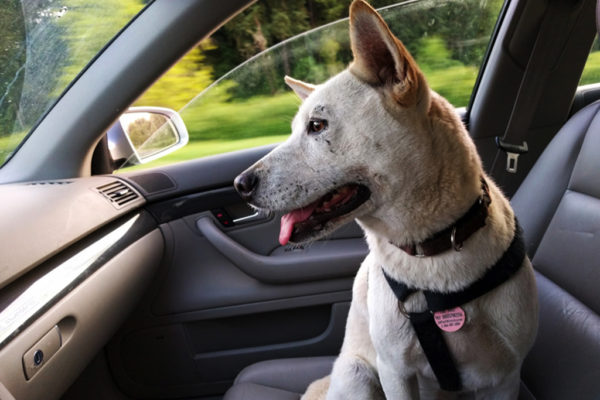The following bi-weekly column is written and sponsored by Bark + Boarding, which provides a heart-centered and safe environment for your pets. Conveniently located at 5818-C Seminary Road in Bailey’s Crossroads, Bark & Boarding offers doggy daycare, boarding, grooming, walking and training services, plus in-home pet care.
By Chelsea Pennington, Bark + Boarding Writer and Animal Enthusiast
In just a few weeks, the skies will fill with fireworks and backyards will fill with barbecues as people across the country celebrate the Fourth of July.
It’s a night of summer fun, but for our furry friends, it can also include dangers and stress. Here are a few tips to make sure your dogs enjoy the holiday as much as you do!
Do keep them away from fireworks
Of course, the biggest danger to pets is fireworks. Lit fireworks can burn dogs’ face, fur and paws. Even unlit fireworks can pose a hazard — they’re typically full of potentially toxic substances that a dog might ingest if they decide to chew on one. Keep all unused fireworks out of reach of curious pups, and have your dog on a leash or in a different, closed-off area if fireworks are going to be set off near you.
Don’t let them near glowsticks
Glow sticks and glow jewelry are a classic part of July 4th festivities, but if a dog gets a hold of one, it won’t be pretty. Besides making a mess, the luminescent substance can irritate your dog’s digestive system and swallowing the pieces of plastic can cause blockage. While the glowing goo isn’t especially toxic, it’s still best to save them for your human friends!
Do know how to deal with anxiety
Loud noises like fireworks are often frightening for many dogs, so it’s important to have a few tactics ready to soothe them. Create a safe space in a room that your dog won’t be able to escape from.
Turn on the TV or some music to help distract from the sounds outside, and close the blinds of the windows. Make sure they have a bed and toys, plus plenty of water — some dogs drink more when they’re anxious, so they might need more than you think.
If your dog is extra insecure, you might want to purchase an anti-anxiety wrap that hugs their body closely, which has a calming effect. There are also anti-anxiety collars and over the counter supplements you can try. If you know your dog hates loud noises, talk to your vet about a prescription for medicine that can help them relax during the holiday.
Don’t leave doors and gates open
With all the excitement, it can be easy for front doors or backyard gates to be left open. When there’s a dog involved, that means it’s a prime opportunity to escape.
Be sure that your family and any guests are aware of the need to close all doors firmly behind you, and let them know if there are any tricks they should be aware of, whether it’s that one hinge that sticks or how your pup likes to hide out in the bushes, just waiting to make a run for it. If your dog is a known flight risk, it might be better to put them in their crate or have them on a long leash outside to make sure they don’t get loose.




